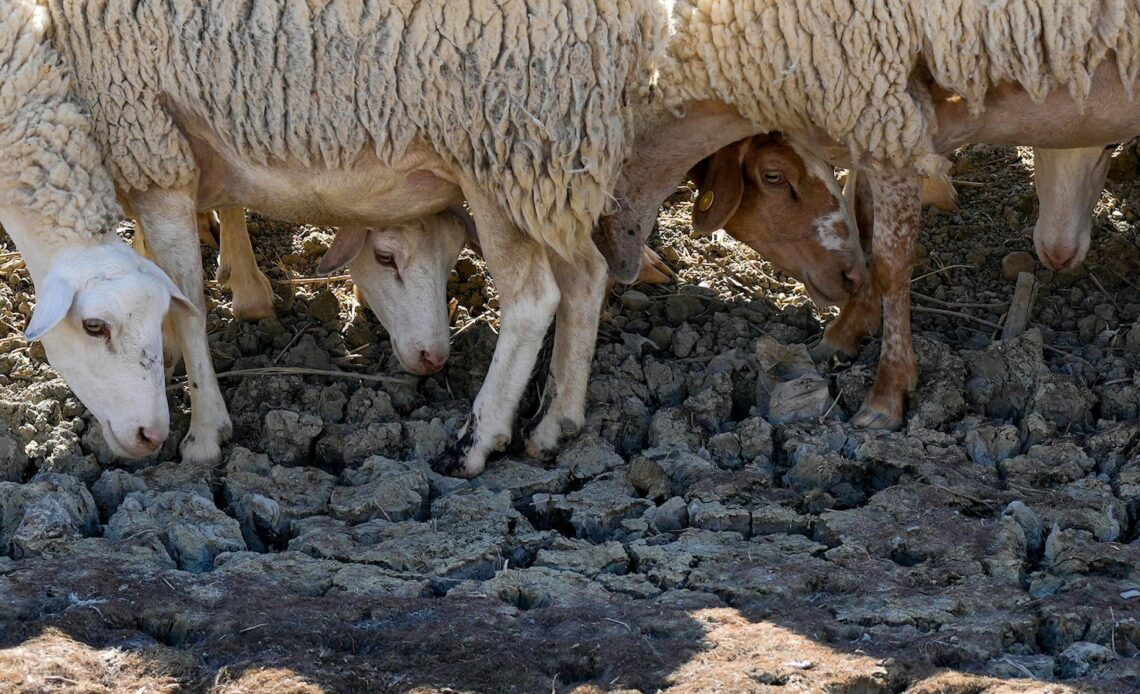CAMMARATA, Italy — On a scorching July afternoon, a municipal water truck rolls up in a cloud of dust on Liborio Mangiapane’s farm in southern Sicily. Some of the precious liquid gets transferred to a smaller cistern on a tractor that Mangiapane’s son will use to fill troughs for 250 cattle and sheep, but by tomorrow, all 10,000 liters from the truck will be gone.
Crippling drought from a nearly rainless year, coupled with record-high temperatures, has burned out much of the region’s hay and is pushing farmers to the limit. For Mangiapane, every day is a struggle to find water, with frantic phone calls, long trips to faraway wells and long waits for municipal tankers.
If rain doesn’t come by the end of August, he’s afraid he’ll have to sell off his livestock.
“We are in a moment of extreme heat and therefore animals need a lot of water,” Mangiapane said. “It’s a constant anxiety to keep the animals from suffering, but also just to have a chance to wash ourselves.”
The worst year for rainfall in more than 20 years has sent fodder production down 70% across Sicily, according to Coldiretti, Italy’s primary farmers association. The main water basins are almost empty and authorities are strictly rationing water.
The region is one of Italy’s breadbaskets, producing 20% of the country’s durum wheat that goes into pasta. Coldiretti estimated that the drought could reduce production on the island by as much as 70%, leading to greater reliance on imports. In coming months, the dry year may hit olive oil and peach production. Hot weather has caused the grape harvest to start nearly four weeks early, though that crop is so far undamaged.
In May, the national government declared a state of emergency in Sicily and allocated 20 million euros ($21.7 million) to buy water tankers, dig new wells and fix leaky aqueducts. Coldiretti has donated 1.5 million tons of fodder and the regional government allocated subsidies for farmers forced to buy hay from third parties.
Parts of Sicily have had rainfall deficits of up to 60%, according to the meteorology department at Italy’s National Research Council. The regional meteorological service reported above-average temperatures throughout June, with highs frequently topping 40 degrees Celsius (104 Fahrenheit) in many areas.
Farmers have seen basins, lakes and ponds that used to be reliable watering spots vanish.
Luca Cammarata watched as his sheep searched for water on his farm in the province of Caltanissetta, one of the…
Click Here to Read the Full Original Article at ABC News: Business…

